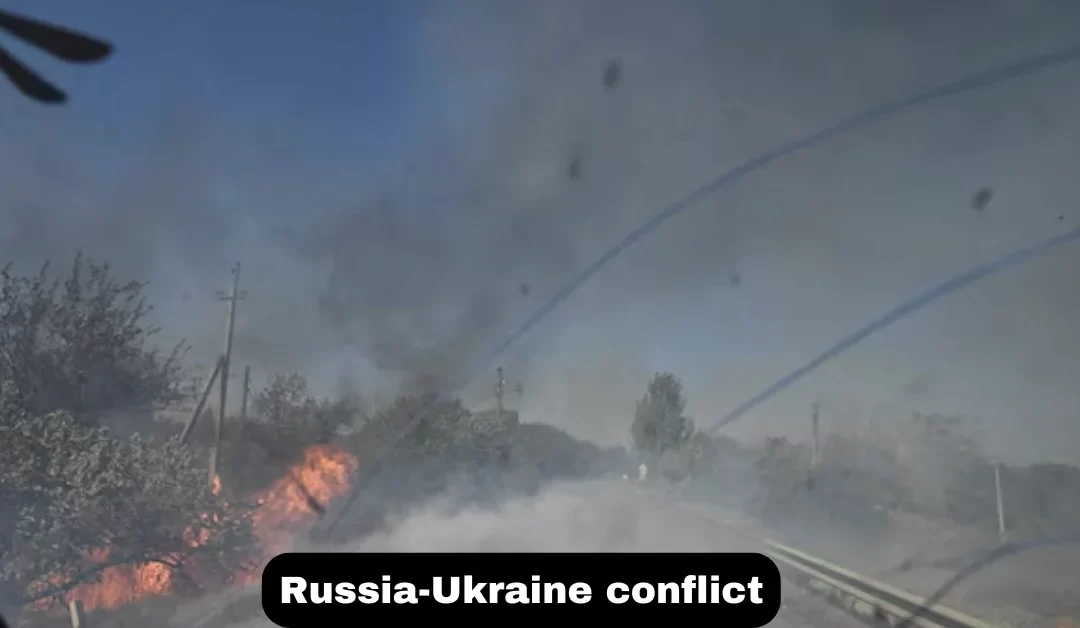Russia has been making significant advances in Ukraine, marking the fastest progress since the early days of its 2022 invasion. Over the past month, Russian forces have captured large territories, posing serious challenges for Ukraine. Let’s dive into the details of this latest development and its implications.
Russia Gains 235 Square Kilometers in One Week
Russian forces reportedly gained 235 square kilometers (91 square miles) in Ukraine within a week. This is a record-breaking advance for 2024, according to the independent Russian news group Agentstvo. The total area captured by Russia in November amounts to 600 square kilometers (232 square miles), based on data from combat footage analyzed by DeepState, a group specializing in mapping the frontline.
Key Points:
- Russia’s advance is the fastest since the invasion began in early 2022.
- Analysts suggest this progress has been ongoing since July, with smaller but steady advances.
- Finland’s Black Bird Group estimates a total gain of 667 square kilometers (257 square miles) in November, possibly including delayed reports from October.
Strategic Focus: The Donetsk Region
The main thrust of Russia’s advance is concentrated in the Donetsk region. Russian troops are closing in on the strategic town of Kurakhove, using heavy artillery and precision bombs to weaken Ukrainian defenses.
Military Strategy:
- Encirclement Tactics: Russian forces encircle key areas, cutting off supplies and reinforcements.
- Heavy Artillery: Artillery and glide bombs are used to dismantle Ukrainian defensive lines.
- Pushing West: Capturing Kurakhove could enable Russia to advance towards the city of Zaporizhzhia, a crucial hub in southern Ukraine.
Russia’s Current Control in Ukraine
Russia currently controls about 18% of Ukraine’s territory, including Crimea and significant parts of eastern and southern regions. This includes:
- Crimea: Fully under Russian control since 2014.
- Donbas: Over 80% of Donetsk and Luhansk regions are occupied.
- Zaporizhzhia and Kherson: More than 70% of these southern regions are under Russian authority.
- Eastern Kharkiv: Less than 3% remains in Russian hands.
Implications:
- Ukraine’s control of the Kursk region has reduced significantly, with Ukrainian forces now holding about 800 of the original 1,376 square kilometers.
- If Russia consolidates its gains, it could further threaten Ukrainian strongholds.
Challenges for Ukraine’s Defense
The situation for Ukraine is dire, particularly in the eastern regions. Ukrainian President Volodymyr Zelenskiy has highlighted several challenges that are affecting their ability to counter Russia’s advances.
Key Issues:
- Delayed Military Aid: Western military assistance has been slow to arrive, delaying the deployment of fully equipped brigades.
- Mobilization Concerns: Ukraine is cautious about expanding mobilization efforts without certainty about the timing and reliability of aid.
- Intense Battles: The Ukrainian General Staff reported 45 active battles in the Kurakhove area alone, demonstrating the intensity of the conflict.
Russian Confidence and Future Plans
Russian officials and war bloggers are optimistic about their progress. Sergei Naryshkin, the head of Russia’s Foreign Intelligence Service (SVR), claims that Russia now has complete strategic initiative on the battlefield.
Next Steps for Russia:
- Kurakhove Breakthrough: If successful, Russian forces could secure their rear positions and prepare for a westward push towards Zaporizhzhia.
- Strengthening Control: Capturing new territories would solidify their hold on eastern Ukraine.
- Long-term Objectives: President Putin aims to occupy the entire Donbas region and secure strategic gains in southern Ukraine.
Rising Casualties and Humanitarian Concerns
Neither side has disclosed accurate casualty figures, but estimates suggest hundreds of thousands of soldiers and civilians have been killed or injured since the war began. Large areas of eastern and southern Ukraine have been devastated, leaving behind wastelands.
Human Impact:
- Thousands of families displaced from their homes.
- Essential infrastructure, including hospitals and schools, destroyed.
- Increased reliance on international aid to support affected communities.































